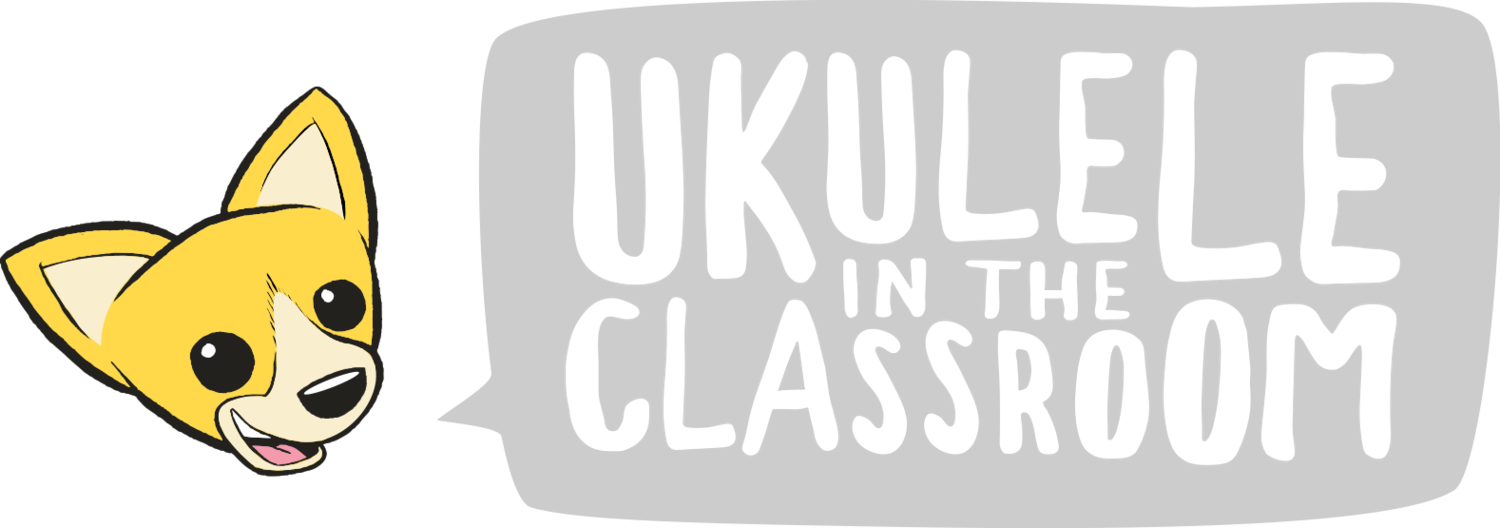Bessie, Bill, Lester And Earl: Getting That Bluegrass Sound
By John Kavanagh
Whether you teach a group, play in a group or just like to jam, understanding the anatomy of the traditional bluegrass sound will make you a better listener, teacher, and player.
The "Layered" Arrangement
I did this tune with my adult uke group because some of them asked to do something “bluegrassy.” I decided to use it as our first “layered” arrangement in which there would be three different uke parts. This lets people at different skill levels play something that is within their scope; you don’t want to discourage beginners but you also want to keep it interesting for those who have more experience – or are very keen – by giving them something challenging to do.
What we did was come up with an imitation of a standard bluegrass group sound using ukes and bass only. When we play this live I do a little introduction about what we’re doing and get the parts to start one after the other as a demonstration.
1. The "Bessie" Part
First comes the bass, playing a simple two- beat rhythm. This is the “Bessie” part (after Bessie Mauldin, who played bass with the original Bluegrass Boys for many years).
Press play to hear the "Bessie" part:This text will be replaced by the flash music player.
2. The "Bill" Part
Next comes the “Bill” part, the high off-beat “chop” that the mandolin plays in bluegrass (leader Bill Monroe in the Bluegrass Boys).
Press play to hear "Bill and Bessie":This text will be replaced by the flash music player.
Bill and Bessie together make a quick “boom-chik” rhythm that can sound unstoppable if it’s tight. It sounds best if you play chords higher up the neck and mute each chord after strumming it by relaxing the left hand between strums. A transcription of these higher-position chords can be viewed here: C6 tuning or D6 tuning.
3. The "Lester" Part
Then we add the “Lester” part (for Lester Flatt, rhythm guitar in the Bluegrass Boys), which is the “easy” uke part, simple first-position chords in a basic strumming rhythm.
Press play to hear "Lester, Bill and Bessie":This text will be replaced by the flash music player.
4. The "Earl" Part
Finally, we add “Earl.” Earl Scruggs was the five-string banjo player in the Monroe group and later in The Foggy Mountain Boys. Get a three-finger picking pattern clear and precise and it gives something of the effect of a five-string banjo, especially in re-entrant tuning.
Press play to hear "Earl, Lester, Bill and Bessie":This text will be replaced by the flash music player.
If someone has a banjo uke, this is their part. Adding some colour chords – playing G6 for G and C9 for C, especially - will spice up this part, and those colour chords on the banjo are a big part of the Scruggs sound so typical of bluegrass. I’m using first-position chords but you can add another element by playing high close voicings even higher than the “Bill” part. The right-hand picking pattern I’m using is T-I-M-I-T-I-M-I-etc., with the thumb alternating on the third and fourth strings.
5. Time to Sing!
Finally, of course, it’s time to sing. The key of G is a good key for this one and is easy for both C and D tunings (good to know if you’re in a “bilingual” group where both are used).
Press play to hear "the band" with vocals:This text will be replaced by the flash music player.
Sometimes a few people will be able to harmonise by ear and if that works, you’re in luck. Otherwise, I’ve scored out a basic three-part harmonisation. The parts may seem high, but that high-tenor sound is also pure bluegrass; Monroe had a high tenor voice that cut through a full band (and possibly through sheet tin as well). Women can take the top part an octave lower.
Try It Yourself!
Take this "layered" approach and apply it to other tunes in your repertoire. Whether you have a group that meets regularly or you sit in on a jam whenever you can, understanding the way different – but complementary – parts work will make you a better listener and player.
A professional multi-instrumentalist based in Kentville, Nova Scotia, John Kavanagh is a regular contributor to Ukulele Yes!He has a great CD called Parlour Music: Ragtime & Classical duets for uke and guitar. Find out more at http://ezfolk.com/audio/John_Kavanagh.



This month, Cynthia Kinnunen gives us some intervalactic tactics
Building recognition of intervals aurally (by ear) and on the page (by sight) helps to improve many aspects of our musical learning, including sight reading, sight singing, harmonizing and more! But knowing where to begin teaching intervals can leave us feeling like we’re on another planet.